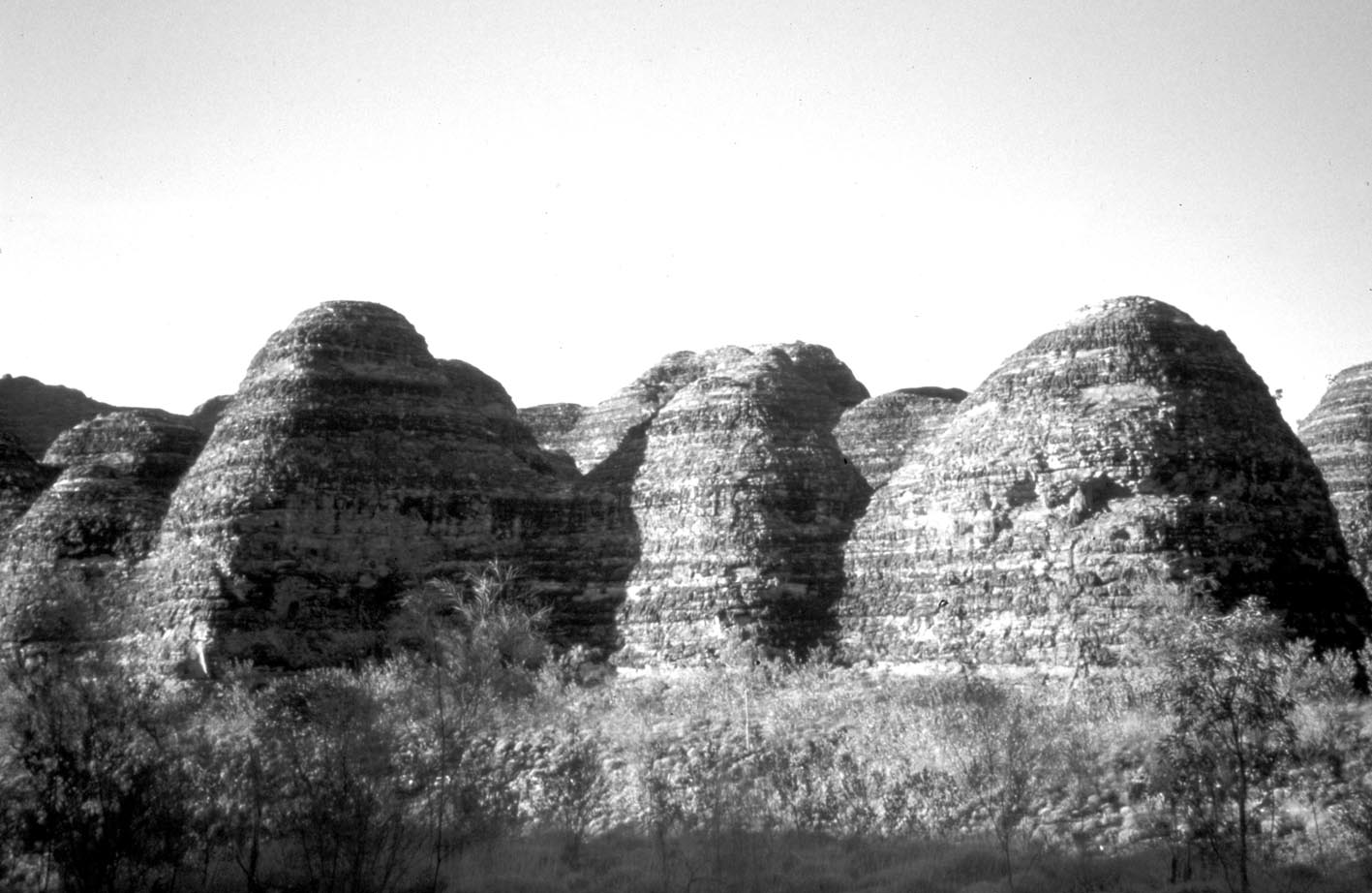Those with an interest in caving, whether personal or professional, are very familiar with the recreational and scientific importance of karst. The recent addition of Australia's Purnululu National Park to the UNESCO World Heritage List brings outstanding recognition for the conservation values of karst terrain.
World Heritage sites, now numbering more than 700 globally, are considered to be the most outstanding protected areas in the world - often referred to as the "crown jewels" among parks and reserves. To attain World Heritage status a site must satisfy a series of strict criteria measuring the security of protection, the standards of management and the area's scientific attributes, particularly in relation to comparable sites.
The spectacular cone towers of the Bungle Bungles, while unique in their lithology and geomorphic evolution, are not alone among karst areas in the World Heritage network. They join some 15 other areas in 12 countries recognised principally for their karst values, including some that will be familiar to readers - China's Huanglong and Jiuzhaigou scenic areas; the Caves of Aggtelek and Slovak Karst in Hungary and Slovakia; Slovenia's Skocjan Caves; Gunung Mulu in Indonesia; and two American national parks, Carlsbad Caverns and Mammoth Cave.
Significantly, the Bungle Bungles relate to only two other World Heritage sites that have karst landscapes formed in non-carbonate rocks - Canaima National Park in Venezuela and Wulingyuan in China.
Some people question whether landscapes such as the Bungle Bungle Range, formed in deeply dissected quartz sandstones, can even qualify as true karst. However, if one follows the generally accepted convention that karst is shaped, at least largely, by the erosional processes of chemical solution, it is possible to recognise sandstone landscapes that are essentially identical in topography and evolution to those in limestones and other carbonate rocks. Within Australia, alone, there are several such areas of well-developed sandstone tower karst, notably on the Arnhem Land Plateau; in the ranges northeast of Kununurra in Western Australia; in Watarrka and Keep River National Parks of the Northern Territories; and in Monolith Valley south of Sydney.

A view of Purnululu's Bungle Bungle Range
What makes Purnululu's Bungle Bungle Range so special is the scale of the land system, and its unique geomorphological history. The Devonian-age quartz sandstones here have eroded over a period of some 20 million years into a spectacular series of cone-shaped towers, whose sheer sides are distinctively imprinted with regular, horizontal bands of dark-grey cyanobacteria crusts (formed by single-celled photosynthetic organisms). It is the stabilising impact of these crusts that maintains the distinctive beehive shape of the towers.
Additional to its geological values, the 239,723ha Purnululu National Park also has significant wildlife and vegetation representative of the transition between the northern tropical monsoonal savannah and inland arid desert biogeographical realms, and including a total of 653 recorded plant species and some 149 species of birds, 81 reptiles, 41 mammals, 15 fish and 12 frog species.
The cultural values of the hunter-gatherer society among the aboriginal traditional owners of Purnululu are also highly significant, and will be promoted for World Heritage recognition in future years.
Purnululu has become widely known in Australia only during the last 20 years, its natural beauty arousing much interest among the general public and attracting as many as 20,000 tourists in a year, many of whom come by air. Some describe Purnululu as Australia's equivalent of the magnificent Grand Canyon of the USA. The focus of interest, emblematic of the park, is the extraordinary array of banded, beehive-shaped towers constituting the Bungle Bungle Range - a unique karst landscape now justifiably recognised among the natural wonders of the world.
World Heritage status will draw even greater world attention to Purnululu, and place more demands on park management. It will be important to ensure that increased visitor use of the area brings no increase in adverse impacts on the special karst features that are vulnerable to damage from inappropriate or excessive use. The assistance of cave and karst specialists in offering information and advice based on their knowledge and experience elsewhere would no doubt be appreciated by the park authorities. And no one with an interest in caves and karst should miss a visit to this new World Heritage site.
* Paul Dingwall is a science manager in the NZ Department of Conservation, based in Wellington, and a consultant on World Heritage to the World Conservation Union (IUCN). He conducted the technical evaluation of the Purnululu nomination for World Heritage.